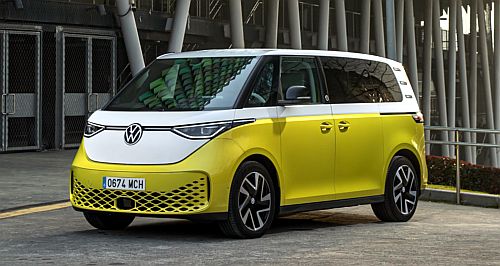News - General News - EmissionsProposed NVES gets mixed responsesAussie auto industry agrees on need for NVES but opinions vary on what it looks like27 Feb 2024 VOLKSWAGEN Group Australia (VGA) joined Hyundai in throwing its support behind the federal government's proposed National Vehicle Emissions Standard (NVES) while other OEMs and industry groups have been less positive.
A NVES draft containing three options – including the government’s preferred approach of a 12 per cent reduction in the average annual emissions intensity of new passenger and light commercial vehicles sold in Australia each year between 2025 and 2030 – is circulating the automotive industry and other interested parties for submissions.
Toyota, Mazda, Kia and Ford have expressed carefully worded support for the proposed NVES, while the Motor Trades Association of Australia has cautiously welcomed it with a “seven out of ten” rating.
A predictably partisan war of words between the Federal Chamber of Automotive Industries and Electric Vehicle council broke out, with the Australian Automotive Dealers Association’s position leaning toward that of the former and the Caravan Industry Association of Australia highlighting the potential impact on people who rely on high-emitting vehicles for towing.
Isuzu Ute Australia, which has just two big diesel-powered models and nothing with which to offset their carbon footprint, stands to be a big loser with the adoption of the government’s preferred NVES option.
A statement from the company on the matter simply said: “While we are still processing the detail of the proposed (NVES), we are unable to comment on the matter.”
Toyota, which sells a lot of hybrids alongside its popular range of utes and off-roaders, says it “supports the introduction of a mandatory fuel-efficiency standard that is ambitious, doesn’t leave Australians behind, is calibrated to the Australian market and allows car-makers to determine the appropriate mix of technologies to achieve it”.
Any decision by the government is likely to be made with an eye on the next federal election due around May 2025, with the finalised NVES planned to come into effect on January 1 of that year.
VGA said it welcomes the NVES and supports the notion that Australia’s auto market should align with the world’s best regulatory standards.
The NVES draft proposes one of three options to limit emissions:
Option A: The required decrease in passenger vehicle emissions from 2025 to 2026 is small then ramps up from 2026 to 2029 while at the same time, light commercial emissions go the other way with the rate of required reductions highest initially and then slowing from 2026 to 2029.
Option B: Preferred by the government, sets an emission-limit scenario intended to catch up to the United States by 2028, with an average annual CO2 reduction of 12.2 per cent for passenger cars and 12.4 per cent for light-commercial vehicles between 2025 and 2029.
Option C: Sees stricter reductions with passenger and light commercial emissions dropping by approximately 25 per cent from 2025-2026. The plan would equal the United States’ NVES by 2026 – and then bring forward its 2029-20 targets to 2028-2029, with 2029 emissions approximately 25 per cent of 2025 emissions.
Both VGA and Hyundai indicated a preference aligned with the government-preferred option but with some aspects of Option A.
Although Hyundai did not expand on what aspects of Option A it would be recommending, VGA specified “super credits for full Battery Electric Vehicles (BEVs) and Plug-in Hybrid Electric Vehicles (PHEVs)”.
“This outcome should be of the most benefit to the Australian consumer,” said VGA managing director Karsten Seifert.
VGA’s announcement of its NVES stance quickly followed comments made by Hyundai Motor Company Australia COO John Kett who said: “We see merit in the government’s preferred Option B, and with some minor aspects of Option A introduced to it, we can hit the proposed target and bring accessible, affordable and efficient vehicles to the market.”
Mr Kett acknowledged the “challenge” of the NVES timeline proposed by the federal government and described it as “ambitious” but was confident that the consultation process would deliver a workable outcome.
“We only have five years to catch up to other advanced markets which have had efficiency standards in place for decades, and that’s a challenge,” he said.
“We applaud the ambition of the policy, and certainly with the input of all the major stakeholders who have a role to play in its development, we’re confident that the government will get the NVES right for all Australian new car buyers.”  Read more26th of February 2024  UK tax changes signal potential NVES outcomesDual-cab ute tax changes in UK signal potential outcomes for Australia under NVES19th of February 2024  Hyundai can ‘see merit’ in proposed NVESBigger role for growing BEV, hybrid line-up flagged as Hyundai welcomes NVES proposal |
Click to shareGeneral News articlesResearch General News Motor industry news |
















Facebook Twitter Instagram